
Above the City : 2000
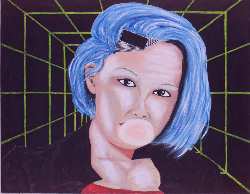
Cyborg Blowing Bubblegum : 2000
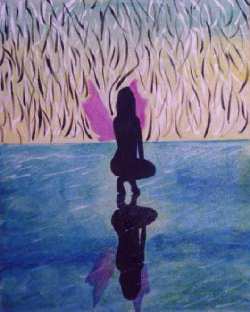
Dark Fairie : 2000
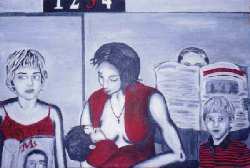
Elevator Scene: Changing Times : 2000
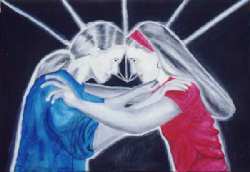
Gene Machine: Glowing Equality : 2000
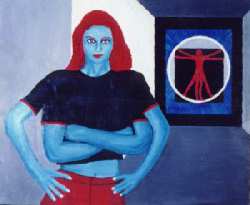
Gene Machine: Kali : 2000
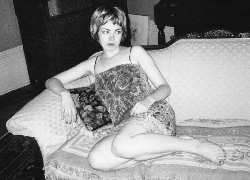
Inside the Feminist #1 : 2000
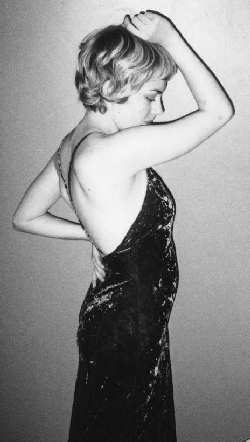
Inside the Feminist #2 : 2000
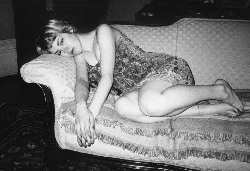
Inside the Feminist #3 : 2000
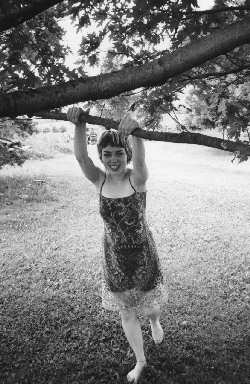
Inside the Feminist #4 : 2000
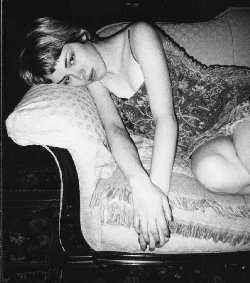
Inside the Feminist #5 : 2000
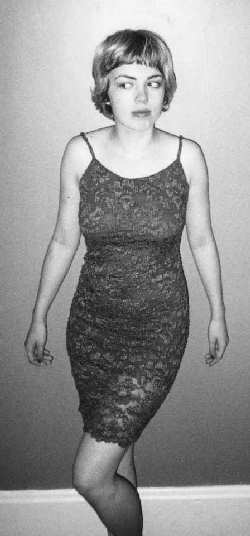
Inside the Feminist #6 : 2000
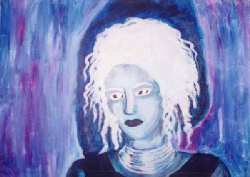
Katya : 2000
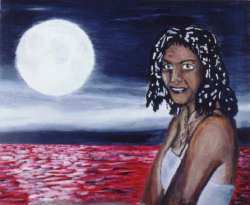
Lilith by the Red Sea : 2000
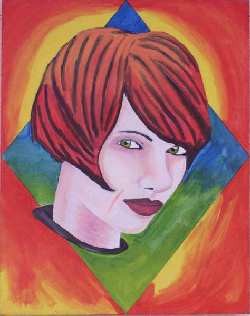
Lilith Incarnation #2 : Autumn Lilith : 2000
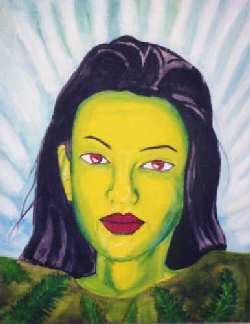
Lilith Incarnation #3 : Forest Lilith : 2000
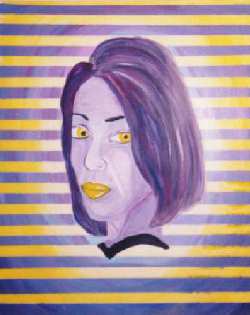
Lilith Incarnation #4 : Scary Lilith : 2000
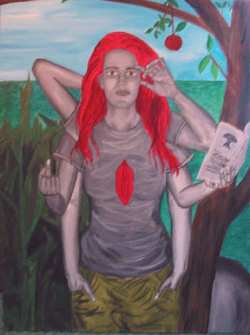
Marilith : 2000
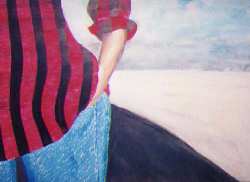
Plaid Hitchhiker : 2000
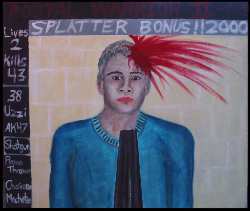
Postal Warrior II : 2000
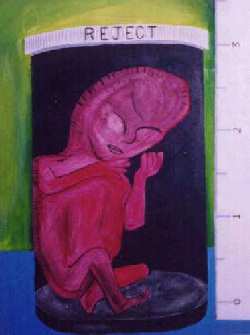
Reject : 2000
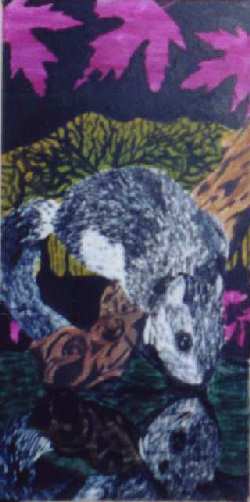
Sputnik : 2000
|
For years now people have asked me for more details about my work, poking me with questions about how I made them, why I made them and what the paintings mean. And of course the obvious question, how much?
I don't even try to sell my paintings. Many of my works are rather academic and theoretical. They are not the kind of paintings that you would see in on someone's livingroom wall or at the dentist office. Instead, they are the kind of paintings you might see in a major art gallery.
I do occasionnally do commissions however, as you will see, and I do occasionally sell my paintings as well. I am rather loathe to part with them however.
My popularity is also rather flattering. I have fans all over the world, university students writing essays about my work, regular emails from fans who "oooh and awwwww", I've been mentioned in several documentaries, and even art groupies. I also receive regular hate-mail and threats from people who find my artwork to be somehow offensive or even blasphemous. According to many people, I am going to hell. I do not let my popularity/anti-popularity bother me however. I just find it amusing.
When I look back over the years at my work, I realize how much my work has changed, and also how much it hasn't changed. I still focus more on people, particularly women, and I am still a romantic at heart. My latest works have become more and more controversial.
As you compare different years of my work, you will see repetitive themes, such as the violin paintings. I usually do one violin painting per year. Some years there is no violin painting. Why do I make violin paintings? Because they're difficult to draw, to shade and to paint. They make excellent practice. I've gotten to the point where I can now draw and accurately shade a realistic violin from memory. Perhaps I should find something even more difficult, to give myself a challenge.
Challenges are also an aspect of my work. Some of my paintings were made partly because it was a challenge. Painting a plaid shirt for example, is a very difficult practice. Not all of my paintings are a challenge however. Some are just a compositional formula that I have worked out, and that formula is simply repeated in numerous paintings. Sometimes I tweak the formula and play with it, change it. I actually have several different That formulas that I use, off and on from time to time. These formulas have become iconic of my style.
Stylistically, I also change my style back and forth as well. Some artworks are almost photographic, while others are more abstract or stylized. It varies largely upon the theme of the piece and what particular style I think is suitable for that piece.
Not all of my art pieces are shown online. Many of them have never even been photographed. For example, my metal and wood sculptures are not shown online, because showing sculpture online really does not do the sculpture piece any justice. Many of my photographic works also are not online, as well as many paintings, numerous drawings, commissions, paintings/photographs that were made as a gift to someone, etc.
The works that are shown online tend to be the ones that are more theoretically and academic. I do make landscape paintings, but I don't show them online often. There are some examples of such art pieces, to give people a broader sense of what I do, but otherwise I simply don't bother to show such pieces online.
Above the City : 2000
Acrylic on Canvas
A bald angel flying above a city of blood-red office buildings, with an intersection far below. Is it an angel of death, an angel of mercy or some kind of vampire/succubus? Does it matter which? Not really. I like to let my viewers decide. The canvas is a thick square tilted at a 45 degree angle, an alternative way of displaying a painting. This painting is part of a series of paintings which concentrate on using a palette of red, black & white and a specific style of drawing figures with heavy outlines.
Cyborg Blowing Bubblegum : 2000
Acrylic on Canvas
What would cyborgs eat? Assuming they don't need food for energy, why would they eat? For the pleasure of course, therefore flavoured bubblegum seems like the obvious choice. The computer chip is wired into her forehead, with her hair dyed blue with white streaks. The background is a perspective of what could be construed either as a futuristic landscape, or an cyberscape. Furthermore, she is in a pose suggestive of a webcam, as if she is gazing towards the computer screen.
Dark Fairie : 2000
Acrylic on Canvas
The fairie's pink wings appear to be purplish in the reflection, as she crouches on the water. This painting is essentially just a play upon reflections, plus a chance to finally paint a fairie. See also the "Sputnik" painting below, which is a painting of a squirrel gazing at its reflection.
Elevator Scene: Changing Times : 2000
Acrylic on Canvas
Past girlfriend Naomi Dyon, Mother Mary with child, a portrait of myself when I was 8 years old, and an old bald man representing patriarchy create this allegorical piece about the changing attitudes of people. Naomi appears reading Ms Magazine (a feminist magazine), Mother Mary nurses the baby Jesus in a public place (an elevator full of strangers), the boy stares straight at the viewer (not even noticing the nursing mother), and the old man appears to be deliberately ignoring the nursing mother. The painting itself was sparked by a newspaper article about women in the United States being arrested for breastfeeding in public places. In Canada, toplessness (or TopFreedom) is a right. In the United States however the patriarchal religious right (especially the Catholic Church) fights to keep women from exposing their breasts in public. Therefore I deliberately used the idea of Mary and Jesus to show that motherhood and breastfeeding is an universal and "natural" idea. Its the way babies were meant to feed, regardless of what ignorant old men think. This painting is part of a series of paintings which concentrate on using a palette of red, black & white and a specific style of drawing figures with heavy outlines.
Gene Machine: Glowing Equality : 2000
Acrylic on Canvas
Both Gene Machine paintings focus on the idea of genetically modifying people to give them abilities that can already be found in nature. Some animals can glow, producing their own light (fire-flies for example). Therefore the idea in this particular one is to create humans that can produce their own light source, by having light emanate out from under the skin. The painting itself has a layer of glow-in-the-dark paint on it too, thus the painting itself actually glows. In the painting is a self portrait plus a portrait of Canadian sculptor Rowan Bannister (who also posed for "Marilith" below).
Gene Machine: Kali : 2000
Acrylic on Canvas
The result in this Gene Machine painting is a woman with four arms and blue skin. In Hindu legends, Kali sometimes had 4 arms, 6 arms, 8 arms or even 10 arms (and was blue). In the background is a variation of Leonardo da Vinci's "Vitruvian Man", except that this version is the Virtruvian Woman. Thus I contrast both Indian and European ideas of the female body. In both Gene Machine paintings, I chose a palette of red, blue, white and black, and played with perspective a bit to add a sense of space. The Kali idea is also similar to the "Marilith" painting below.
Inside the Feminist Series (#1 - #6) : 2000
35mm Black/White film
Naomi Dyon reappears again (she is in many of my paintings), this time displaying her persona and her love of Marilyn Monroe dresses. Naomi is a feminist, although you would never guess it. The fact is that there is stereotypes of what people "think" a feminist should look like. The fact is that they can look like anybody. Much like people have stereotypes of lesbians, but without realizing again that there is no one standard. You can never tell. We make up terms like dyke, metrosexual, lipstick lesbian, but meanwhile people really don't have a clue. Women are inevitably female incognito.
Katya : 2000
Acrylic on Canvas
A 10 minute painting of a woman in negative colour. Drawn from my imagination, this painting literally took only 10 minutes to paint and another 10 minutes to dry. Using a computer, you can reverse the image and you will see a dark-skinned woman with funky hair wearing a white dress. Either way it looks interesting. I chose the Polish name Katya because I like names that begin with "K".
Lilith by the Red Sea : 2000
Acrylic on Canvas
Ex-girlfriend Jahanara Ullah appears in this version of Lilith. In the story of Lilith, after she left Eden she went west to the banks of the Red Sea, and there she waited. To me, she had finally gotten rid of that idiot Adam, and much like the modern divorcee, she has much to smile about. Like the "Dark Fairie" above, the "Lion Nightmare #1" and the "Sputnik" painting below, this painting again uses reflection in water as a theme.
Lilith Incarnation #2 : Autumn Lilith : 2000
Acrylic on Canvas
"Autumn Lilith" is part of a series of paintings ("Blue Lilith"/"Winter Lilith" was painted in 1999), all with a single idea: The Lilith myth. In the ben-Sira version of the Bible, it isn't Adam and Eve. Its Lilith and Adam.
According to the ben-Sira version of the Bible, male and female were made at the same time, both out of clay. But they fought and Lilith eventually left the Garden of Eden, taking some of god's power with her. God then made Eve as a replacement for Lilith. Because Lilith never ate the apple from the Tree of Forbidden Knowledge, she cannot die. She is immortal. Furthermore, because she took some of god's power, she also has incredible powers, including the power to shapechange.
Thus the Lilith Incarnation Series is about Lilith's shapechanging ability, different versions of what she might look like, but all of them have the same intensity in their eyes. The painting itself is stylized, but looks surprisingly realistic.
Lilith Incarnation #3 : Forest Lilith : 2000
Acrylic on Canvas
Also known as "Spring Lilith". See above.
Lilith Incarnation #4 : Scary Lilith : 2000
Acrylic on Canvas
Also known as "Summer Lilith". See above.
Lion Nightmare #1 : 2000
Acrylic on Canvas
Naomi Dyon again appears in this painting based upon a nightmare that I had. Over the years I have had many nightmares about lions. In this particular nightmare, Naomi and I were sitting in front of a campfire, when a lion appeared in the distance on the opposite side of a river and started watching us. The lion watches Naomi as if it intended to attack, but it never did. It was a rather frightening nightmare and I decided to paint it because it was so vivid. It sparked a whole series of Lion Nightmare paintings that followed in later years. If you compare this painting to "Inside the Feminist #6", you will see I used the photograph for reference. Because the photo was in black and white, I guessed when it came to colours, and tried to add a sense of firelight to both Naomi's face and the torso of the lion.
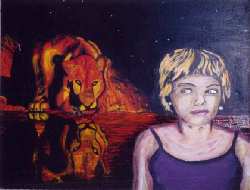
Lion Nightmare #1 : 2000
Marilith : 2000
Acrylic on Canvas
Canadian sculptor Rowan Bannister posed several times for this painting, just so I could get the multiple arms. According to mythology and archeologists, the Sumerian fertility/agricultural goddess Lilith had servants known as Mariliths which helped farmers with their daily chores. These Mariliths were also skilled warriors and could defend the farmers in times of need. They are essentially angels/demi-gods which help the central god (in this case the agricultural goddess Lilith). The painting itself is incredibly symbolic. The apple references the Adam & Eve myth (and therefore the Biblical version of Lilith) and the orchards of farmers, the barley/corn represents agriculture/fertility, the green of the ocean and the green of her pants again reference fertility, on her shirt is a red vagina (which is also corn cob shaped, again referencing agriculture) which directly references the menstrual cycle and sexuality/fertility, her two upper hands represent thought and understanding, the hand showing the "Fuck You" finger represents violence, sexuality and also the old German word "fech" (from which the English word "fuck" is derived from) which means "to spread seeds" (again with the agriculture), the book in her other hand is about nuclear physics (showing an atomic bomb on the back) and suggests that she is also a woman of war when necessary and also a woman of intense intelligence, the bottom two hands show that she is relaxed and confident in herself and her sexuality, and lastly her bright red hair references the red hair of Lilith (many myths suggest she had red hair) and also blood (which is the source of human life). The painting is fairly large and the Marilith is roughly life-size.
Plaid Hitchhiker : 2000
Acrylic on Canvas
A female hitchhiker wearing a plaid shirt and with broad hips walks beside a road, snow in the distance. This painting is basically a practice in painting different textures. Plaid, denim, skin, the surface of the road, the snow, and the texture of the clouds in the sky.
Postal Warrior II : 2000
Acrylic on Canvas
Computer game violence meets real-life psychos in this painting/pun. The phrase "Gone Postal" is taking literally here, as the "Postal Warrior" goes about killing people with a shotgun, Uzzi, .38, flamethrower, chainsaw and a machete. It is an interesting painting when you compare it modern games like Counterstrike, which is similar in concept and regularly has a voice-over during the game that says "ULTRA-KILL!" and similar phrases whenever a character in the game is killed. In the case its "Splatter Bonus!!" Apart from mocking the violent video game industry, its also an important social statement about people in society who lose contact with reality and start killing everyone. The postman who one day decides to end it all and kill all their co-workers at the same time. For fun, the man in the painting is loosely based on one of the singers from the boy-band "Backstreet Boys" which I despise (because they don't even write their own lyrics).
Reject : 2000
Acrylic on Canvas
This painting has several possible meanings: Genetic manipulation, cloning, or abortion. Whichever way you look at it, that is a bloody aborted fetus in a 3 inch tall container. It has either been rejected by its mother, by its doctor, or the scientists working on it (depending on which idea you want to think about). I am not endorsing these ideas, nor am I against them. The piece is merely meant to be thought-provoking.
Sputnik : 2000
Acrylic on Canvas
I once had a pet squirrel named Sputnik. He would climb up to my apartment window and I would feed him peanut-butter. I painted this of him, and added pink maple leaves because of the maple tree outside that apartment. For interest sake, I chose to make the painting a reflection painting, similar to "Lion Nightmare #1", "Dark Fairie", and "Lilith by the Red Sea" above.
Statues of Memory : 2000
Acrylic on Canvas
Naomi Dyon appears again, this time in a blue bandanna, a vibrant green dress, a red blanket underneath her and pink cushions behind her. The painting combines different fabric patterns, which is challenging to paint (and looks wonderful when completed). I chose to show her in black and white to show its the past and that this is therefore a memory of her. The bandanna is a repetitive theme from previous years.
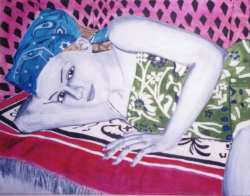
Statues of Memory : 2000
The Suited Succubus : 2000
Acrylic on Canvas
The succubus is not a demon but a feminist icon in this picture. She is strong, independent and full of determination. Her arms appear muscular underneath her suit, her hairstyle is professioal and yet alive with energy. She emanates a fiery persona of someone who will not accept no as an answer. Some people despise women in business, but I see nothing wrong with it.
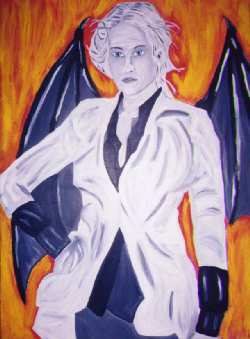
The Suited Succubus : 2000
Valeska : 2000
Acrylic on Canvas
Deceased friend Valeska Ko'Ragur makes an appearance in this painting. She was a violinist and regularly wore a bandanna. For many years I have made violinist paintings (usually one per year), and therefore it is a repetitive theme for me. In this painting I also play with red/green colour theory, and again use the repetitive theme of bandannas.
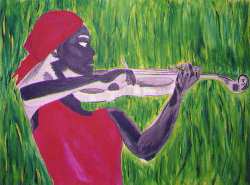
Valeska : 2000
Why? : 2000
Acrylic on Canvas
Menstruation, sexuality and ignorance play equal parts in this painting. Of course, a menstruating woman doesn't actually drip blood like that. This is a deliberate stereotype in order to get instant understanding of what the art piece is about. Some women are embarrassed about menstruating, and likewise almost all men simply don't understand menstruation (or even try to understand it). In general men prefer to avoid the topic (switch the tv channel whenever a tampon ad comes on, etc) and thus they remain ignorant of the topic because most men simply don't want to know about it. The art piece itself is actually quite open ended. It doesn't even have to be interpreted as menstrual blood, it could also be blood from losing one's virginity, or the woman could have been a victim of rape. Both of these latter topics can also be considered controversial and different people may even come up with other possible meanings for the painting. The combination of all three ideas means that this is basically a vaginal painting, bringing in the dual topics of fertility and sexuality. This painting is part of a series of paintings which concentrate on using a palette of red, black & white and a specific style of drawing figures with heavy outlines.
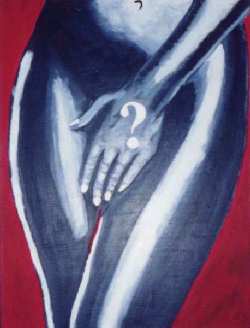
Why? : 2000
|
|



























